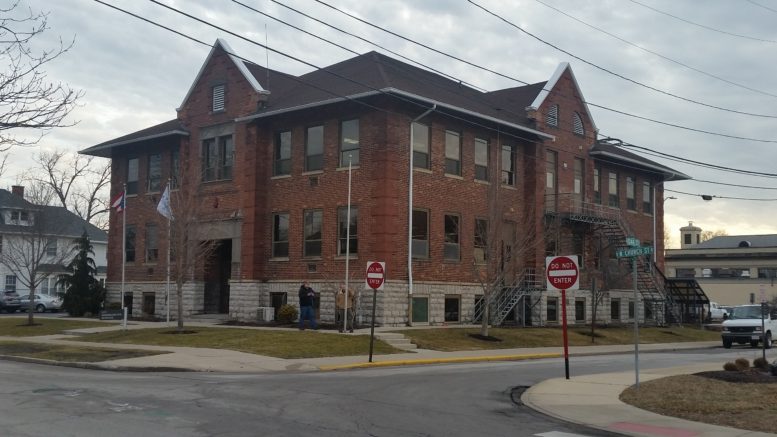By JAN LARSON McLAUGHLIN
BG Independent News
Bowling Green’s city income is steady – and that’s good … well, kind of.
“The good news is, it’s very stable,” said City Finance Director Brian Bushong. “The bad news is, it’s very stable.”
Bushong gave the pre-budget overview for 2017 to council members Monday evening.
Moody’s has again given the city a strong credit rating of Aa2, which is slightly higher than the Aa3 rating given to most cities nationally. And due to state changes in due dates for income tax, Bowling Green is experiencing a one-time windfall in that revenue placing them about $1.5 million ahead of where planned.
“This is a wonderful year for income tax,” Bushong said.
Since much of the city’s income tax revenue is already divvied up, these one-time dollars will benefit each of those funds. The income tax collected is distributed as follows:
- 37.5 percent for general fund.
- 25 percent for sewer and water capital fund.
- 18 percent for fire fund.
- 7 percent for police fund.
- 6.25 percent for capital fund.
- 3.75 percent for street repair fund.
- 2.5 percent for recreation fund.
Income tax revenue has continued to grow in the city, increasing an average of 4.89 percent annually since 2011. The city benefited from new and expanding businesses, such as Betco, Cooper Standard and Kroger.
“The economic outlook from an income tax standpoint looks very positive,” Bushong said.
However, the general fund revenue paints a less positive picture. That average growth in the general fund revenue was just 0.65 percent since 2011. The factors leading to the miniscule growth include loss of various sources of state funding, declining or flat court fines and other revenue, ambulance fees, kilowatt tax, and the upcoming loss of the cable franchise fee.
“The general fund has been flat,” Bushong said.
The city has managed the flat revenue and increasing costs through financial and debt policies, healthcare increases for employees, prioritizing projects and deferring maintenance.
“We’ve become much more productive, much more efficient and creative,” he said.
Bushong is expecting more of the same in 2017.
“We don’t see anything in the future that is causing us to think there is going to be a change, either in revenue or expenses,” he said. “We’re generally pleased with the economy of Bowling Green.”
After Bushong’s presentation, council members asked a variety of questions about ways next year’s budget may be spent.
“There’s never a shortage of good ideas,” just a shortage of money, he said.
Council member Sandy Rowland mentioned community complaints about the lack of code enforcement in the city. The enforcement staff was cut from two to one, when an employee left and was not replaced due to budget constraints.
“Do we need more enforcement officers? Is one doing the job?” Rowland asked.
Municipal Administrator Lori Tretter said city officials are receiving the same complaints from citizens. “I agree with you. We are hearing that,” she said.
But council member Bob McOmber voiced concern about hiring an additional person before the community action plan is complete. “I think we would be foolish to commit a lot of dollars” without the study recommendations.
Council member John Zanfardino agreed an additional enforcement person would allow the city to respond faster to concerns. “A second code enforcement person would really help Bowling Green,” he said. Even a part-time person “could make an incredible dent.”
However, Tretter questioned the validity of slow responses being due to a lack of enforcement. Immediate enforcement isn’t possible in some cases due to city requirements giving residents time to respond, or mailing delays.
Tretter also suggested it would be wise to wait to take any action until the Camiros community action plan is complete. “We’re paying a lot of money for this,” and it would be advisable to wait, she said.
Council member Daniel Gordon added that the city should allocate money to implement the findings of the community plan.
Other items discussed during the pre-budget overview included:
- Council president Mike Aspacher pointed out the amount of money left to council’s discretion “is really very limited. We have to continue to be mindful of the big picture.”
- Aspacher said he was hopeful the city could continue its efforts to invest in sidewalk work. “We need to find ways to make our community more walkable and more bikeable,” he said.
- Council member Bruce Jeffers mentioned the need to set aside about $50,000 a year for housing issues in the city.
- City officials were reminded to prepare for the next year when the city will have 27 rather than 26 paydays. That will occur in 2021 or 2022.
- Rowland asked about former discussions of possibly contracting out for some services now provided by the city. She said that trash collection, however, should continue being provided by the city so it is done properly.
- Aspacher mentioned possible plans for the city to increase revenue coming into city coffers. Tretter said the staff will have some proposals ready by early next year. “There are opportunities for us to increase our revenue,” Aspacher said.
Jeffers expressed his appreciation for the city’s efforts.
“We trust you to run programs efficiently,” Jeffers said. “I have a lot of faith in you and your folks to do a good job.”
“We take that trust very, very seriously,” Tretter responded.

